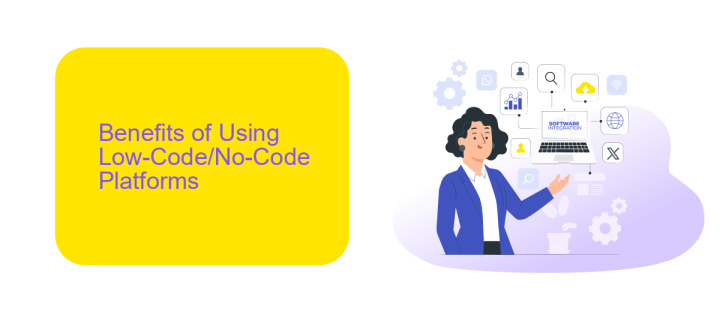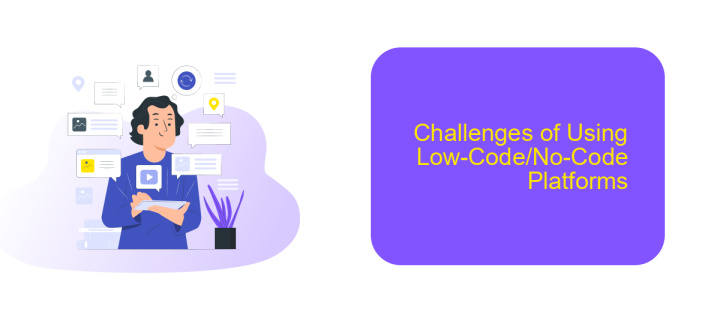What Are Low-Code No-Code Platforms
Low-code no-code platforms are revolutionizing the way businesses develop software by enabling users to create applications with minimal or no coding experience. These platforms offer intuitive drag-and-drop interfaces, pre-built templates, and automated workflows, making it easier for organizations to streamline their development processes, reduce costs, and accelerate time-to-market. This article explores the key features, benefits, and use cases of low-code no-code solutions.
What are Low-Code/No-Code Platforms?
Low-code/no-code platforms are tools that allow users to create applications with minimal or no coding skills. These platforms provide a visual interface where users can drag and drop components to build applications, making it accessible for non-developers.
- Visual development environment
- Pre-built templates and modules
- Integration capabilities with other services
- Automated workflows
These platforms are ideal for businesses looking to accelerate their development process and reduce costs. They also enable rapid prototyping and deployment, allowing companies to quickly adapt to market changes. For instance, ApiX-Drive is a service that facilitates seamless integrations, enabling users to connect various applications without any coding. This enhances the functionality of low-code/no-code platforms by providing easy integration solutions.
Benefits of Using Low-Code/No-Code Platforms

Low-code and no-code platforms offer numerous benefits, making software development more accessible and efficient. These platforms enable users with minimal coding knowledge to create applications swiftly, reducing the dependency on specialized developers. This accelerates the development process, allowing businesses to bring their products to market faster and respond more rapidly to changing market demands. Additionally, the visual interfaces and drag-and-drop features simplify the design process, making it easier for non-technical users to participate in application development.
Another significant advantage is the ability to integrate various services and systems seamlessly. Platforms like ApiX-Drive facilitate the connection of different applications without requiring extensive coding skills. This ensures that businesses can automate workflows and enhance productivity by integrating disparate systems efficiently. Moreover, the cost savings associated with reduced development time and the need for fewer specialized developers make low-code and no-code platforms a financially viable option for many organizations. Overall, these platforms democratize software development, enabling innovation and agility across various industries.
Use Cases for Low-Code/No-Code Platforms

Low-code and no-code platforms have gained significant traction due to their ability to streamline application development and empower non-technical users. These platforms offer a variety of use cases that demonstrate their versatility and efficiency in different business scenarios.
- Business Process Automation: Companies can automate repetitive tasks and workflows, reducing manual effort and increasing productivity.
- Custom Application Development: Organizations can quickly develop tailored applications to meet specific business needs without the need for extensive coding knowledge.
- Integration of Services: Platforms like ApiX-Drive allow users to easily integrate various applications and services, ensuring seamless data flow and operational efficiency.
- Prototyping and MVPs: Startups and enterprises can create prototypes and minimum viable products (MVPs) rapidly to test ideas and gather user feedback.
- Data Management and Reporting: Users can build custom dashboards and reports to visualize and analyze data, aiding in better decision-making.
These use cases highlight the flexibility and power of low-code and no-code platforms. By enabling users to develop and deploy solutions quickly, these platforms help businesses stay agile and responsive to changing market demands.
Challenges of Using Low-Code/No-Code Platforms

While low-code/no-code platforms offer numerous benefits, they also come with their own set of challenges. One significant issue is the limitation in customization. These platforms often provide a range of pre-built templates and components, but they may not always meet specific business needs, requiring additional development efforts.
Another challenge is integration complexity. Although these platforms are designed to simplify processes, integrating them with existing systems can be complicated. For instance, connecting various third-party applications may require specialized tools or services, such as ApiX-Drive, to ensure seamless data flow.
- Limited customization options
- Integration complexities
- Potential security vulnerabilities
- Scalability issues
Lastly, security is a concern. As these platforms are built to be user-friendly, they may not always adhere to the highest security standards, making them susceptible to vulnerabilities. Businesses must carefully evaluate these factors to make the most of low-code/no-code platforms while mitigating potential risks.
- Automate the work of an online store or landing
- Empower through integration
- Don't spend money on programmers and integrators
- Save time by automating routine tasks
Future of Low-Code/No-Code Platforms
The future of low-code/no-code platforms is poised for significant growth and transformation. As businesses increasingly seek to accelerate digital transformation, these platforms will become essential tools for rapid application development. They empower non-technical users to create complex applications with minimal coding knowledge, thereby democratizing software development. This trend will lead to a surge in citizen developers, who can quickly respond to market needs and innovate without relying heavily on traditional IT departments.
Moreover, the integration capabilities of low-code/no-code platforms will continue to expand. Services like ApiX-Drive will play a crucial role in this evolution by offering seamless integration solutions that connect various applications and automate workflows. This will enable businesses to streamline operations and enhance productivity without extensive coding efforts. As artificial intelligence and machine learning become more integrated into these platforms, we can expect even more sophisticated and intuitive tools that will further reduce the barriers to entry for software development.
FAQ
What are low-code no-code platforms?
Who can benefit from using low-code no-code platforms?
How do low-code no-code platforms help in automating business processes?
Are low-code no-code platforms secure?
Can low-code no-code platforms integrate with existing systems?
Time is the most valuable resource for business today. Almost half of it is wasted on routine tasks. Your employees are constantly forced to perform monotonous tasks that are difficult to classify as important and specialized. You can leave everything as it is by hiring additional employees, or you can automate most of the business processes using the ApiX-Drive online connector to get rid of unnecessary time and money expenses once and for all. The choice is yours!


